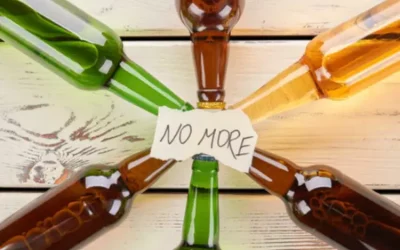-
Cocaine: Effects, Mixing With Alcohol, Addiction, and More
Ethnic differences in genes for the enzymes that help the body break down substances can mean that substances may last longer in the bodies of people from one ethnicity versus another. Marijuana does not stay in the blood for long and is undetectable how long does cocaine stay in your system after around three to four hours. Marijuana blood tests are uncommon because there is only a narrow window of opportunity to draw blood for a drug test. False positives with cocaine urine drug tests are rare, but they can happen.
How Long Can Cocaine Be Detected in the System?
Explore different types of rehab programs from residential addiction treatment programs to outpatient drug rehab centers. It is recognized as a promising therapeutic strategy for cocaine use disorder to develop an efficient enzyme which can rapidly convert cocaine to physiologically inactive metabolites. In comparison, at 37 °C, the protein was less stable, with a half-life of ~ 82 days for cocaine hydrolysis activity. Additionally, the in vivo studies further confirmed the linear elimination PK profile of CocH5-Fc(M6) with an elimination half-life of ~ 9 days. Urine tests are a commonly used testing method because they are non-invasive and can detect trace amounts of cocaine.
How Long Does CBD Stay in Your Hair?

Detox and drug rehab may be recommended for people showing signs of cocaine abuse and addiction. Cocaine stays in the body longer in people who use it long-term. Detoxifying can take significantly longer than it would for those who use it short term, and the substance may show up https://ecosoberhouse.com/ in drug tests for a longer period. Part of the reason for this is a longer history of use means a person has a higher tolerance and may take higher doses. When someone has a urine test done, the test is not looking for the cocaine molecule because it leaves the body too quickly.
Hair cocaine test
Certain medicines produce metabolites with a somewhat similar structure to benzoylecgonine while some other substances may cause a false positive. The type of drug test you undergo will have a major impact on whether or not you test positive. For example, a urine test will show weed in your system for a longer period of time than a blood test. If you are seriously concerned (and/or the thought of drug testing makes you anxious), your best bet is to hold off on consumption.
- Cocaine has a relatively short half-life of around 1.5 hours, while benzoylecgonine has a half-life of 5.5–7.5 hours.
- A common concern of people who use crack cocaine is if and for how long their drug use will show up in a drug test.
- All this help, information, and guidance will help the patient during the treatment course and all the people around.
- Because it’s so short-acting, people will often use it over and over in a short period.
- States of CocH5-Fc(M6) samples under different storage testing temperatures (37, 25, 4, − 20, and − 80 °C).
Methamphetamine: Facts, effects, and health risks – Medical News Today
Methamphetamine: Facts, effects, and health risks.
Posted: Fri, 30 Sep 2022 07:00:00 GMT [source]
(E) Appearance (liquid and solid) right out of storage place after 12 months (day 365). (G) Appearance (liquid and solid) right out of storage place after ~ 18 months (day 553). (H) Appearance of liquid (melted) samples after ~ 18 months (day 553).
These are the chemicals the body produces when breaking down cocaine. However, they can still test positive on a drug test due to these cocaine metabolites. The half-life of cocaine determines how quickly a person will stop feeling high or begin feeling withdrawal symptoms. New cocaine users may find that the high weakens within a couple of hours, while habitual cocaine users may already begin feeling withdrawal within a few hours after their last dose. Nowadays, urine tests are used far more than blood tests during drug screening.
- Making informed decisions and taking personal responsibility can significantly impact one’s health and well-being.
- Adrienne Santos-Longhurst is a freelance writer and author who has written extensively on all things health and lifestyle for more than a decade.
- Ark Behavioral Health offers 100% confidential substance abuse assessment and treatment placement tailored to your individual needs.
- Every time you drink, acetaldehyde binds to fat cells and proteins in the liver, triggering an inflammatory response that damages and kills liver cells.
Discover content

- One reason for false positives is the “cutoff limit.” Drug tests don’t come up positive if they detect any amount of any drug metabolite.
- You will receive medications to manage severe symptoms along with supportive care to stay nourished and hydrated.
- Even if you follow all the directions to a T, you may still fail your test.
- The increase in CBD vendors and products has caused users to become particularly interested in the conversation surrounding methods of consumption.
- These are the chemicals the body produces when breaking down cocaine.
-
Links between alcohol use and suicidal behavior National Institute on Alcohol Abuse and Alcoholism NIAAA
In fact, for every death due to war, there are three deaths due to homicide and five deaths due to suicide [5]. It is estimated that about one million people die annually from suicide, i.e., a global mortality rate of 16 per 100,000, or one death every 40 seconds [2]. If you need suicide- or mental health-related crisis support, or are worried about someone else, please call or text the 988 Suicide and Crisis Lifeline or chat with Lifeline to connect with a trained crisis counselor. The FHE Health team is committed to providing accurate information that adheres to the highest standards of writing.
How Does Alcohol Misuse Affect Suicide and Suicidal Attempts?
Second, there were 12 studies (mostly old studies) that seemed potentially eligible for inclusion in this meta-analysis, but their full texts were not accessible. We requested the relevant institutes to find the full texts for us, but they could not. We tried to contact the corresponding authors to send us the full texts, but the authors did not respond. Measures of alcohol effect were expressed as risk ratio (RR) and odds ratio (OR). RR is the relative incidence risk of events in the exposed group versus the non-exposed group occurring at any given point in time.
Support links
They include current misuse of alcohol and other drugs, concomitant depression, criminality, and difficulties in controlling aggression and impulsivity. Initial screening for suicidality was comprised of questions from the National Comorbidity Survey (NCS) (Kessler et al., 2004), which assessed, for the past month and year, the presence or absence of any 2 weeks kidney cleanse: does it work 2-day plan and risks of wanting to die, any thoughts of suicide and any suicide attempt. The initial screening for depressive symptoms consisted of the PHQ-2 (Kroenke et al., 2003), which assessed three depressive symptoms in the preceding 2 weeks, each scored 0–3. Students who had positive screens for high risk went on to rate the remaining PHQ-9 items (Kroenke et al., 2001).
- Failure to identify specific alcohol-related disorders can delay the initiation of readily available therapies and increase the morbidity and mortality of patients.
- Intervention should help people find a motivation to stop drinking, identify the circumstances that motivate them to drink, identify the factors that engender this conduct, and evaluate the possible risk of suicide.
- In this prospective analysis of 2296 college students deemed at increased risk for suicide, the degree of alcohol problems, but not consumption level, significantly predicted the likelihood of suicide attempts.
- ’, ‘Have you ever thought of taking your life, even though you would not actually do it?
- We will here clarify some terms regarding alcohol use and suicide to help understand their relationship.
Alcohol-Related Risk of Suicidal Ideation, Suicide Attempt, and Completed Suicide: A Meta-Analysis
Therefore, persons in this patient population have a higher risk of suicidal behavior compared with younger individuals (9). Research has found an association between perinatal depression and preterm birth. In addition, suicidal behavior by the pregnant individual has been linked with a greater risk for antepartum hemorrhage, alcohol use disorder diagnosis and treatment placental abruption, postpartum hemorrhage, premature delivery, and poor fetal outcomes. A cohort study of 7,542 women with eating disorders showed an increased risk of preterm birth and microcephaly among infants born to women with any diagnosed eating disorder compared with those without this condition.
We hypothesize that use of alcohol among individuals intending to make a suicide attempt, for the purpose of facilitating the suicidal act, may represent a distinct group typified by greater suicide planning, intent, lethality, and potentially co-occurring depression. Such an idea could be tested using a large sample of suicide attempts preceded by AUA whose motivations for alcohol use (among other variables) were retrospectively assessed shortly after the attempt. Whether you’re seeking treatment for yourself or you’re concerned about a loved one, know that there are many ways to help prevent suicide and stop alcohol misuse. Many people in similar situations have benefited from a combination of mental health and substance use disorder treatment. In some cases, you may receive a dual diagnosis of a major depressive disorder (MDD) and an alcohol use disorder (AUD).
If someone you love has a problem with alcohol, or you have noticed them acting out of the ordinary, it’s important not to jump to conclusions. Throwing around unfounded accusations could make them feel attacked and escalate the situation. They can help you determine a course of action and make sure you have all the tools necessary to get the help you or your loved one need. He is also a clinical psychologist at CRUX Psychology, a Canadian-based psychology practice offering online and in person services.
The overall admission rate for violence, including sexual violence, in England has shown a downward trend over the last decade. However, the admission rate for males continues to be higher than for females. In the latest period (April 2020 to March 2023), there were 53.9 admissions per 100,000 population for males (45,344 admissions) compared with 15.2 for females (13,241 admissions) (Figure 1). Zhang also said healthcare institutions should look to leverage technology to support adoption of appropriate standards. “Emphasizing non-stigmatizing language is crucial not only for fostering honesty but also for supporting the overall treatment process and patient outcomes,” Zhang said.
The odds of suicidal behaviour increased across alcohol use risk groups for all outcomes in the unadjusted models, with the highest risk group showing strong evidence of an association with suicidal behaviour outcomes. Following adjustment, evidence of an effect remained for suicidal thoughts and suicide attempts, but not for non-suicidal self-harm. Because suicide is a complex problem, no single approach is likely to contribute to a significant, substantial decline in suicide rates.
By analyzing the data from 33 longitudinal studies — and 10,253,101 participants — we determined that alcohol use is a substantial risk factor for death by suicide. In fact, we found that alcohol use increased the risk of death by suicide by a frightening 94 per cent. Early intervention after a suicide attempt is vital alcohol poisoning because the 3-month period after an initial attempt is when an individual is at the highest risk of additional suicidal behavior. Yet those who attempt suicide have been found to be very difficult to engage in treatment. These interventions can include outpatient or inpatient treatment depending upon the severity.
-
Alcoholic Nose Rhinophyma: Symptoms & Management
Excessive drinking can damage and disease the liver, heart, and other parts of the body and contribute to diseases such as diabetes and various types of cancer. Alcohol might contribute to rosacea and rhinophyma, but the substance doesn’t seem to cause the conditions in the first place. People who have noses that are inflamed, bulbous, and red often have rhinophyma, which might be a form of a condition known as rosacea.
How Alcoholic Nose Can Point to an Addiction at Hand
Yet chronic alcohol abuse can worsen the condition (rosacea), which leads to drinker’s nose when left untreated. Rhinophyma is a condition that occurs when rosacea, a chronic skin disorder, spreads to the nose. Rosacea causes visibly red or swollen skin and sometimes bumps or acne-like conditions. In conclusion, the notion that alcohol consumption can make your nose bigger is nothing more than a myth.
What Does Alcoholism Do To Your Appearance?
- We offer various services, including alcohol rehab, detox, individual therapy, and group counseling.
- If you or a loved one suffers from alcoholism, please get in touch with our alcohol rehab in Orange County immediately.
- Entrust your addiction with people who love and care about you and want to see you happy.
- Rosacea can be treated in its early stages with antibiotics, including topical creams.
- If you’re struggling with alcohol abuse, it’s not too late to get help.
- Located in the serene environment of Scottsdale, Arizona, our team of addiction specialists provides comprehensive treatment options in a luxurious and supportive environment.
For more advanced forms of rhinophyma, the most effective way to manage thickened skin is almost exclusively through physically removing excess tissue. Sometimes, this can include relying on ablative lasers or electrical currents https://ecosoberhouse.com/ (a treatment known as diathermy) to help remove excess tissue. Therefore, a common cause of rhinophyma is having long-term rosacea. For people who develop rhinophyma, their face skin thickens, especially around the nose.
- Likewise, not everyone with an alcohol addiction develops rosacea, either.
- Medication can also be used to help manage withdrawal symptoms and cravings.
- If inflammation is present because of a bacterial infection, then oral antibiotics such as tetracycline may be prescribed to manage the infection.
- Check out our blog posts and resource links for the latest information on substance abuse.
- While there is no cure for rosacea, treatments are available to keep the symptoms under control.
Who Is More Likely to Develop Rhinophyma?
This is especially if treatment for the skin condition is ineffective. Over the years, several quirky and interesting terms for alcoholics’ noses took off and became popular to refer to people with larger or purplish-red noses. Unfortunately, the medical definition for it faded into doctors’ circles as the term alcoholic nose took off in modern society. The most common and effective treatment for rhinophyma is surgery.

Alcohol and Other Triggers for Rosacea of the Nose
Fetal alcohol syndrome face: How FASD affects the face and more – Medical News Today
Fetal alcohol syndrome face: How FASD affects the face and more.
Posted: Thu, 07 Dec 2023 08:00:00 GMT [source]
Surgical treatment can remove tissue overgrowth, reshape disfigured noses, and minimize the appearance of enlarged blood vessels. It may be completed with a scalpel, laser resurfacing, dermabrasion, or via cryosurgery. Rosacea is not caused by alcoholism, but alcohol abuse can affect rosacea, which may worsen the appearance why do alcoholics have big noses of a drinker’s nose. Excessive drinking can lead to many problems, including liver disease, and can impact your appearance. However, the term alcoholic nose is not a medically-recognized condition. There is a long-standing belief that excessive alcohol consumption can cause your nose to grow bigger over time.
Feeling trapped by addiction? Help is available.

Treating Alcoholic Nose And Alcohol Use Disorder
-
Bio-Psycho-Social Issues Foundations of Addiction Studies
Individuals experiencing withdrawal may suffer severe symptoms that include sweating, nausea, vomiting, abdominal pain and irritability (Koob and Le Moal 2005). The risk of mortality is increased due to overdoses; there is an increased risk of acquiring bacterial infections, and other blood-borne pathogens such as HIV and HCV, as described earlier. Concurrent mental illness and addiction the norm rather than exception further characterize individuals with severe opiate addiction (Rush, Urbanoski, Bassani, et al. 2008). Addictions research using heroin-assisted treatment (HAT) trials such as the North American Opiate Medication Initiative (NAOMI) and similar HAT studies and programs in Europe are a striking, if not controversial example of an effort to embody a biopsychosocial systems approach.
Availability of data and materials

Likewise, had Engel stayed on the subject of illness, he would only have been able to establish that diabetes and schizophrenia are alike as human experiences, and not that the latter is a medical disease. Constructing a “gun violence disease” to promote medical intervention into society is therefore quite consistent with Engel’s vision. For here we see a concept of “disease” that, instead of constraining scientific and political forms of authority, becomes a mechanism for their amplification. It is important to note that the wayward BPSM argument on gun violence has been set forth in the leading health policy journal Health Affairs (Grossman and Choucair 2019). It also received considerable attention at at least one conference put on by prestigious health institutions (National Academies of Science 2019) and is echoed in the “Social-Ecological Model” of violence used by the U.S.
Psychological Aspects
This study was no exception, whereby residents at baseline reported excessively high levels of drug and/or alcohol use and high levels of dependence, almost all were polydrug users and on government benefits, with very few fully employed. Further, baseline biopsychosocial scores were all low, with extremely low levels of wellbeing http://www.freeoboi.ru/eng/wallpaper/7497.html even compared with other residential treatment cohorts. While not suggesting that TCs are only suited for individuals at the severe and complex end of the spectrum, this study shows that TCs are able to assist these individuals to make substantial and sustained changes across a range of critical aspects of their lives.

Assessment tools for screening and clinical evaluation of psychosocial aspects in addictive disorders
Programs that do not have a plan for creating a culture of recovery among clients risk their clients returning to the drug culture or holding on to elements of that culture because it meets their basic and social needs. In the worst-case scenario, clients will recreate a drug culture among themselves within the program. In the best case, staff members will have a plan for creating a culture of recovery within their treatment population. NIH-funded scientists are working to learn more about the biology of addiction.
- As such, future studies will have to use complex models to move beyond one-dimensional outcomes to understand the contextual issues of opioid misuse and/or use disorder and improve not only overdose outcomes but person-level quality of life.
- (Ghaemi (2010) has previously noted the BPSM’s tendency towards eclecticism and insufficiently systematized data collection).
In response to the epidemic, multiple federal, state, and local agencies have implemented various strategies to address the opioid crisis. Increasing the availability of naloxone—a medication that reverses the effects of an overdose—is projected to reduce opioid-related deaths by approximately 4% according to http://narodinfo.ru/news/49288.html the most recent projections [6]. Other interventions like reduced prescribing for pain patients and excess opioid management can increase life years and quality-adjusted life years, but overdose deaths would increase among those with opioid dependence due to a move from prescription opioids to heroin [6].
The Biopsychosocial Model
This may involve reckless behaviour that is often incomprehensible to other people and may lead to stigma and shame [16, 18, 48]. Mental health problems, such as anxiety and depression, may increase [29], and it may be difficult to maintain social relationships, everyday parenting responsibilities and work routines [18, 34]. The hard work of obtaining, paying for, and using substances becomes all-consuming [37, 47].
- In 2017, the Monitoring the Future Project reported that 11% of 12th graders in the U.S. vaped nicotine in the past 30 days.
- An underlying feature of these interacting systems is the human subjective experience of free voluntary actions, which problematizes laws within the natural world that every event has a cause with causally sufficient explanations.
- Rates of substance use and dependence vary across, and even within, cultural and social groups (Wallace 1999; Wallace, Bachman, O’Malley et al. 2002).
Centers for Disease Control and Prevention (Centers for Disease Control and Prevention 2022). These points suggests that “gun violence disease” is not necessarily a fringe argument, and that its potential to shape medical and political practices should be taken seriously. Invoking the BPSM and writings of Paolo Freire, they argue that gun violence disease can be attributed to an underlying “disease of oppression” embedded in “our violent society.” “Public health,” they write, “has a role to address the disease of oppression” (Kohlbeck and Nelson 2020, 3). Instead of merely providing public education, health professionals should engage directly in the “dismantling of violent structures of power” and in fostering “liberation” (Kohlbeck and Nelson 2020, 4–5). This effort would entail helping to redistribute resources in society to eradicate the perceived root causes of violence and steering public discourse on violence to align with the authors’ own views (Kohlbeck and Nelson 2020, 4–5).
These changes have great importance for those who provide care to this age group. The papers in this issue of Current Pediatrics Reports address a number of these changes. 6To be sure, researchers also present legitimate scientific arguments validated through other means under the heading of “applying the BPSM.” These uses of the BPSM are simply not the focus of this article. 2Nor, as will be discussed further below, does the BPSM provide us with a workable alternative (i.e., non-biomedical) definition of disease. In highlighting these problems, this study provides further evidence that the sorts of fallacious arguments in medicine noted by Binney (2019) are relatively widespread, consequential, and in need of remediation. To sum up, the BPSM can appropriately be called a “conceptual framework,” but it is not a scientific model or an explanatory model of disease (Bolton and Gillett 2019; Ghaemi 2011; McLaren 1998; Quintner and Cohen 2019).
- One explanation for this trend is that the toxic stress from trauma leads to a dysregulated stress response.
- Ethics approval was obtained from the relevant university committee (DUHREC_EC20047) and written informed consent was received from all participants.
Is CEO of Odyssey House Victoria, though was not involved in data collection or analysis. Conceptualization P.K.S., S.G.; methodology P.K.S., S.G., A.J.L.; formal analysis P.L. And P.K.S., investigation P.K.S., A.J.L., S.G.; resources S.G.; data curation P.L. Writing—original draft preparation P.K.S., P.L.; writing—review and editing https://www.cool-ticket.info/CubaTrips/cuba-music A.J.L., S.G.; project administration A.J.L.; funding acquisition, P.K.S. and S.G. Semi-synthetic opiates such as heroin mainly activate mu opioid receptors in the central nervous system (Koob, Sanna, and Bloom 1998). Mu receptors activate analgesia, respiratory depression, miosis, euphoria, and reduced gastrointestinal motility.
RECENT POSTS
categories
- Uncategorized
- elder care
- aging parent
- family support
- Infographic
- Alzheimer's
- home care
- End-of-Life Care
- hospice
- palliative care
- in-home care
- at-home care
- caregiver
- dementia
- respite care
- Artificial intelligence
- Bookkeeping
- Bootcamp de programación
- Форекс Обучение
- Bettilt
- ankarafayansustasi net
- Paribahis
- roku bet
- Новости Криптовалют
- Bootcamp de programação
- Taxi Montenegro
- Sober living
- FinTech
- beluga bahis
- thelongeststride com
- Bahsegel
- Software development
- casinomhub
- News
- Sahabet
- Финтех
- gokturkelektronik net
- mais2 com
- minimiri com
- tipobet turkiye
- tipobet365
- onwin
- redmirepool sitesi
- Marsbahisgiris
- Tipobet
- biramalt.com
- Betpas_next
- bahis sitesi
- hayatnotlari com
- Форекс партнерская программа
- Forex Trading
- IT Образование
